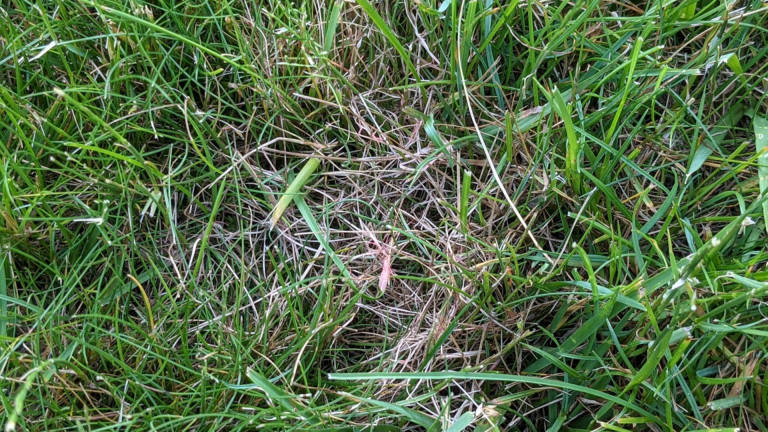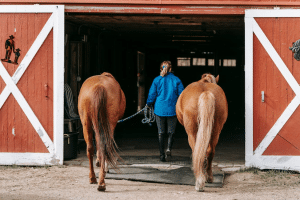Brown spots, thinning patches, and strange-colored grass often leave homeowners guessing. These signs can be easy to overlook or confuse with poor watering or bad mowing habits. However, the real issue might be lawn disease, and acting early can make a significant difference.
Many lawn diseases start small but spread fast. By the time the damage is clear, the problem may already be tough to manage. That’s why learning how to spot them early is so important.
Pictures paired with symptoms give you the tools to act sooner. A quick glance at a yellow ring or silver patch can guide you to the right fix without guessing. You don’t need to know everything, but you do need to know what to look for.
This guide features some of the most common lawn diseases, accompanied by clear images and detailed symptoms to help you identify each one. You’ll also learn what causes them, how to prevent them, and what to do next.
Common Lawn Diseases: Pictures and Symptoms
Lawn diseases can sneak in quickly and do a lot of damage before they’re noticed. By learning to recognize the look and symptoms of each disease, you can act fast and limit the harm. The following sections provide descriptions, symptoms, and conditions for the most common lawn problems.
1. Brown Patch

Brown patch is a fungal disease that typically appears in hot, humid weather conditions. It typically affects cool-season grasses, such as tall fescue and ryegrass. This disease spreads fast, especially when nights stay warm.
Look for large, circular patches of tan or brown grass. The edges of the patches may appear darker or slightly gray. In some cases, the outer ring looks like a smoke ring.
Brown patch develops when lawns are overwatered or fertilized excessively in the summer. Poor airflow and damp conditions facilitate its rapid spread. It’s most active during stretches of warm, wet weather.
2. Dollar Spot

Dollar spot is one of the most common lawn diseases and gets its name from the small, silver-dollar-sized spots it creates. It thrives in lawns with low nitrogen levels and often appears during warm, humid periods. It affects both cool- and warm-season grasses.
The disease first shows as small, round, straw-colored spots. As it spreads, these spots can merge to form larger patches. If you look closely in the morning, you may see cottony threads on the grass blades.
Dollar spot typically appears when lawns are under stress due to poor soil or drought conditions. It becomes more active when daytime temperatures are warm and nights stay humid. Lawns that are cut too short are especially at risk.
3. Red Thread

Red thread is a disease that shows up in cool, wet spring and fall conditions. It affects many types of grass, including Kentucky bluegrass, fescue, and ryegrass. The disease gets its name from the reddish strands that form on the grass blades.
Early signs include patches of pale or pinkish grass. Over time, thin, red threads begin to stretch from one blade to another. These threads can give entire areas a reddish or pink hue.
This disease is more likely in lawns that are low in nitrogen. It doesn’t usually kill the grass, but it can make it look thin and patchy. Damp conditions and slow-growing grass increase the likelihood of red thread appearing.
4. Rust Disease

Rust disease is a lawn fungus that causes grass blades to develop a rusty, orange coating. It’s more common in late summer and early fall, especially during dry spells. The disease spreads through spores that rub off easily on shoes or lawn tools.
You’ll notice yellow or orange dust on your hands, shoes, or mower after walking through the grass. The blades may also look thin, dry, and weak. Heavily infected grass can stop growing or even die back in severe cases.
Rust spreads more readily in shaded areas and lawns that are stressed due to drought or low nitrogen levels. It affects many types of grass, including bluegrass and ryegrass. Poor airflow and crowded lawns exacerbate the issue.
5. Leaf Spot

Leaf spot is a group of fungal diseases that cause dark, sunken spots on the blades of grass. These spots can grow and merge, killing whole sections of grass. It’s most common in spring and early summer when the weather is warm and wet.
At first, you’ll see small brown, purple, or black spots on the blades. Over time, the center of each spot may turn tan, giving it a “halo” look. When severe, the spots join together, and the grass begins to thin or die.
Leaf spot becomes more serious in lawns that are overwatered, overfertilized, or mowed too short. Moist, humid conditions create the perfect environment for the disease to thrive. It affects many cool-season grasses, particularly when they are stressed.
6. Pythium Blight

Pythium blight is a fast-moving, water-loving lawn disease that thrives in hot, humid conditions. It often appears overnight on cool-season grasses, such as ryegrass and bentgrass. This disease can kill patches of turf quickly if left untreated.
It begins as small, greasy-looking spots that feel slimy or water-soaked. These spots turn brown and collapse, often forming streaks along mowing lines. In the early morning, you might see a cottony white mold on the grass blades.
Pythium spreads fast in poorly drained areas or lawns watered late in the day. Overcrowded grass and high nitrogen levels exacerbate the issue. It’s especially aggressive during heat waves followed by rainy nights.
7. Snow Mold

Snow mold appears after the snow melts and is most common in early spring. It affects cool-season grasses that were covered by snow for long periods. There are two types: gray snow mold and pink snow mold.
You’ll see circular, matted patches of dead grass, often with a white or pinkish web-like growth. The grass in the center may appear bleached, slimy, or crusted over. As the ground dries, the moldy coating usually disappears.
Snow mold forms when snow sits on top of unfrozen ground. Long, wet winters and heavy thatch increase the risk. Lawns that weren’t mowed short enough before snowfall are more likely to be hit.
8. Fairy Ring

A fairy ring is a fungal lawn issue characterized by its distinctive, circular patterns in the grass. It can create rings of dark green grass, dead zones, or even mushrooms. It affects all grass types and shows up in both cool and warm seasons.
These rings can range from a few inches to several feet in width. Some rings have thick, fast-growing grass, while others leave bare or dry areas in the middle. You may also spot mushrooms along the ring’s edge.
Fairy rings often appear in lawns with heavy thatch or buried organic matter. It’s more common in sandy soils and areas with poor drainage. Although it may seem unusual, it’s not always harmful unless it causes grass to die.
9. Slime Mold

Slime mold is more of a visual issue than a harmful lawn disease. It appears after wet weather as odd patches that resemble spilled paint, foam, or jelly. It can be white, yellow, purple, or gray.
The mold sits on top of grass blades, covering them in a crusty or gooey layer. It does not harm the grass but can block sunlight if left in place for too long. After a few days, it dries up and disappears on its own.
Slime mold thrives in warm, damp conditions, especially in shady, overwatered areas. It’s more common in the summer and during extended wet periods. Raking or washing it off is usually all that’s needed.
10. Powdery Mildew

Powdery mildew is a fungal disease that covers grass blades in a white, flour-like coating. It often affects Kentucky bluegrass and other cool-season varieties in shady, damp areas. The disease is most active in cool, humid temperatures.
At first, you’ll notice a white or gray powder on the leaves. Over time, the grass may turn yellow and become thin or weak. It typically begins in shaded areas and can spread rapidly.
Poor airflow and thick tree cover exacerbate powdery mildew. It often appears in areas that don’t get much sun or are watered late in the day. The good news is that it rarely kills the grass—it just makes it look bad.
11. Summer Patch

Summer patch is a serious disease that damages the roots of grass, often before you notice symptoms up top. It primarily affects Kentucky bluegrass and fine fescues during periods of hot weather. It’s most harmful when lawns are stressed by heat and drought.
You’ll see circular patches of dead or dying grass that may look like rings. The inside of the ring often appears healthy while the outer edge turns yellow or brown. These patches expand over time and can merge into larger dead zones.
The fungus that causes summer patch attacks the grass roots, rendering them unable to absorb water. This disease spreads in poorly drained soils, particularly when the soil is overwatered or compacted. It becomes more visible when heat stress sets in.
12. Necrotic Ring Spot

Necrotic ring spot is a root disease that forms ring-shaped patches of thinning grass. It’s most common in Kentucky bluegrass and lawns less than 10 years old. The symptoms often show up in late spring or early fall.
The rings are usually 6 to 18 inches wide and may appear sunken. The grass inside may stay green while the outer ring turns yellow or brown. Over time, the center may also die off completely.
This disease thrives in cool, wet soils and spreads during spring and fall when grass roots are most active. Overwatering, excessive thatch, and compacted soil increase the risk. It’s challenging to treat and may require more than one season to resolve.
13. Fusarium Patch

Fusarium patch, also known as Microdochium patch, mostly appears in fall, winter, or early spring. It affects cool-season grasses, such as bentgrass and annual bluegrass. The disease is encouraged by cool, damp weather and heavy thatch.
It starts as small, water-soaked spots that turn pink or light brown. The patches grow and may form circular or irregular shapes. When it’s active, the affected area often looks greasy or slimy.
Poor drainage and excessive nitrogen in late fall can increase the chance of fusarium patch. Shady, damp lawns are especially at risk. This disease spreads slowly but can linger for months without treatment.
14. Typhula Blight

Typhula blight is a type of snow mold that hits grass during long winters with deep snow cover. It’s mostly seen in the northern United States and affects cool-season grasses, such as bluegrass and fescue. The disease becomes visible once the snow melts in early spring.
You’ll notice gray or tan circular patches that are matted down. The grass may look dead, and white fungal threads might be visible. The affected areas stay soggy and slow to recover.
Typhula blight develops when snow sits on top of unfrozen, moist soil. Poor lawn preparation before winter, such as leaving the grass too long, increases the risk. Lawns with heavy thatch are also more vulnerable.
15. Take-All Patch

Take-all patch is a root disease that hits bentgrass lawns and other cool-season turf. It typically begins in the spring and worsens through the summer. The disease attacks the roots, causing the grass to turn yellow and then brown.
Early signs include irregular patches of wilted or slow-growing grass. Over time, the patches turn tan or straw-colored and may have a reddish tinge at the edges. The grass becomes easy to pull out due to root damage.
Take-all patch spreads in soil with poor drainage or high pH levels. Lawns with heavy lime use or stressed turf are at a higher risk. Fixing the soil and improving drainage are key steps to control it.
16. Anthracnose

Anthracnose is a lawn disease that affects both the blades and roots of grass, depending on the prevailing conditions. It’s most common in compacted, stressed turf, especially annual bluegrass and bentgrass. The disease shows up during hot, dry spells or wet, mild periods.
On grass blades, anthracnose causes yellow patches and blackened leaf tips. In severe cases, the crown and roots rot, resulting in dead spots that spread rapidly. Infected turf often looks sunken and weak.
This disease thrives in lawns with poor drainage, low nitrogen, or heavy foot traffic. Maintaining healthy grass through balanced feeding and minimizing stress can help reduce outbreaks. Fixing compact soil is key to long-term control.
17. Large Patch

Large patch is the warm-season cousin of brown patch, affecting grasses such as zoysia, Bermuda, and centipede. It typically occurs in early spring or late fall, when temperatures are mild. The fungus damages the plant’s crown and roots.
It begins as circular patches that grow to be very large, sometimes several feet in diameter. The grass inside may turn yellow, then reddish-brown, and finally die. The edges of the patches often look sunken and can feel spongy.
Overwatering, poor drainage, and excessive thatch can exacerbate a large patch. It spreads quickly in wet soil and cool nights. Reducing water and dethatching are crucial in preventing future outbreaks.
18. Gray Leaf Spot

Gray leaf spot hits lawns during hot, humid weather, especially in late summer. It mostly affects perennial ryegrass, tall fescue, and St. Augustine grass. The disease spreads fast and can kill grass in a matter of days if left unchecked.
The first sign is tiny brown spots on the leaves that quickly grow larger and turn gray in the center. The leaf blades may twist and collapse, creating thin, patchy areas. Affected grass often looks water-stressed even when the soil is damp.
Gray leaf spot thrives in lawns that are overfertilized or overwatered. It’s common during warm, rainy periods and when grass is cut too short. Controlling moisture and limiting nitrogen in summer helps reduce outbreaks.
19. Yellow Patch

Yellow patch, also known as cool-season brown patch, typically appears in early spring or late fall. It affects bluegrass, fescue, and other cool-season grasses. Unlike some other patch diseases, it doesn’t usually kill the grass.
It causes large, irregular rings or patches of yellowing grass. These spots can blend together, giving the lawn a blotchy appearance. The grass inside the patches often recovers with warmer, drier weather.
Yellow patch thrives in moist, cool soil. Poor airflow, thick thatch, and nighttime watering can exacerbate the issue. Aeration and improved drainage help keep it from coming back.
20. Helminthosporium Leaf Blight

Helminthosporium leaf blight is a group of diseases that affect grass blades, especially in early spring. It’s most common in Kentucky bluegrass and perennial ryegrass. It often flares up after cold, wet winters.
The disease causes narrow brown spots with yellow edges on grass blades. As it progresses, the tips of the grass turn tan and collapse. Severely infected areas thin out and may look scorched.
Leaf blight is more likely in compacted or stressed lawns. It spreads in cool, moist conditions, especially when grass is mowed too short. Good airflow, proper mowing height, and timely spring lawn care can help mitigate its impact.
What Causes These Lawn Diseases?
Lawn diseases don’t just appear at random. They appear when specific conditions allow fungi or bacteria to grow and spread. Understanding what causes these problems can help you stop them before they start.
- Heat and moisture create the perfect breeding ground for fungus
- Poor airflow between blades keeps grass damp for too long
- Overwatering or watering late in the day can promote disease
- Dull mower blades tear grass, leaving it open to infection
- Compacted soil and heavy thatch trap moisture and block roots
- Some grass types are more prone to certain diseases than others
Fixing these issues early makes a big difference. A few changes in lawn care can help your grass stay healthy and less susceptible to disease.
How to Prevent Lawn Disease?
Mow your grass at the right height to keep it healthy. Cutting it too short makes it weak and open to disease. Always use sharp blades to ensure each cut is clean and not torn.
Aerate your lawn at least once a year to loosen compact soil. This helps water, air, and nutrients reach the roots. Dethatching removes the thick layer that can trap moisture and lead to disease.
Water your lawn deeply but not too often. Early morning is the best time because the grass dries out during the day. Watering in the evening keeps the grass wet overnight, which encourages disease.
Use a balanced fertilizer and avoid over-fertilizing with nitrogen. Too much can cause quick growth that weakens the grass. Feeding your lawn properly helps it stay strong and disease-free.
What to Do if You See Symptoms?
If you notice spots, rings, or discolored patches, it’s best to act fast. Early action helps prevent the spread and gives your lawn a better chance to recover. Even small changes can make a big impact.
- Mark off the affected area and avoid walking on it
- Pull out and throw away infected grass and clippings
- Use a fungicide made for the disease you suspect
- Try natural fixes like compost tea or baking soda sprays
- If the problem is large or keeps coming back, call a pro
Watching your lawn closely and addressing problems promptly can save you time and effort. The sooner you step in, the easier it is to keep your lawn healthy and full.
Conclusion
Lawn diseases don’t wait. They show up when conditions are just right and often catch people off guard. However, with a little care and close attention, you can identify them early and prevent them from spreading.
Use this guide as a reference—not just once, but whenever something appears to be off. Saving or sharing pictures can help you or someone else catch a problem before it worsens. Early action leads to faster recovery.
Healthy grass starts with healthy habits. Mow the right way, water deep but not too often, and feed your lawn based on its real needs. Most problems can be avoided by doing the basics well and staying alert.
You don’t have to guess. You just need to pay attention. When you learn what to look for and act quickly, your lawn stands a much better chance of staying green, full, and trouble-free all year long.













